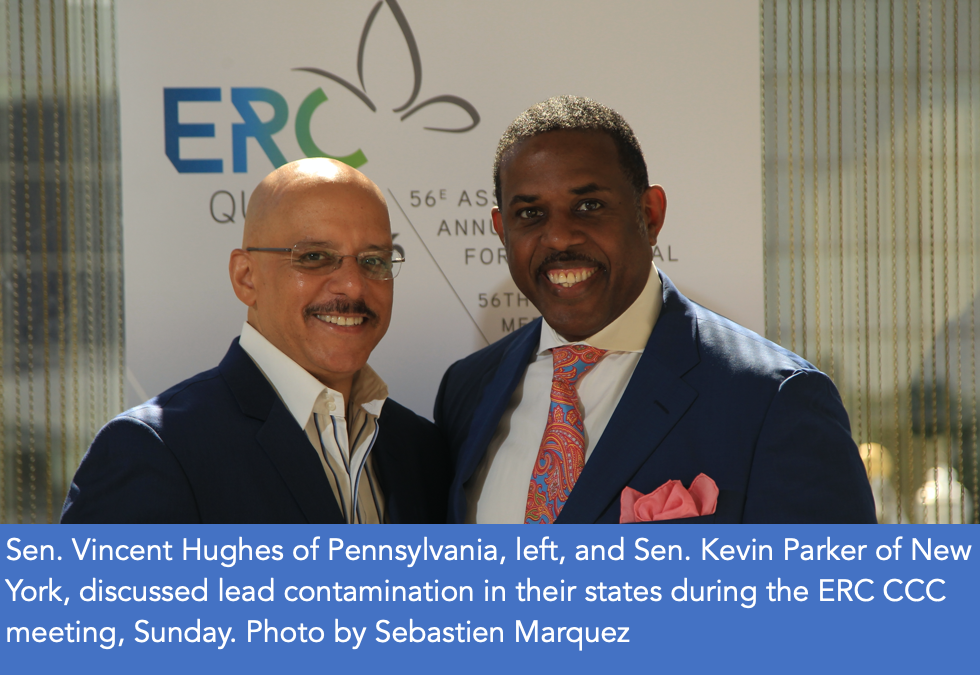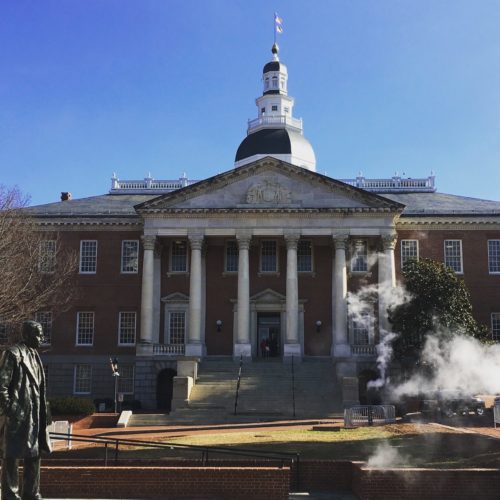Flint, Michigan, returns lead, environmental racism, to the national conversation
This article appears in the Monday, August 8, 2016 Annual Meeting Daily Meeting News in Québec.
Lead and lead poisoning had largely been dropped from the national conversation until massive lead contamination in Flint, Michigan, brought it back.

That, said Pennsylvania State Senator Vincent Hughes, may have been the only good to come from Flint’s tragedy. Hughes and New York Senator Kevin Parker talked about issues of environmental racism in a session of the ERC Quad Caucus Sunday.
Hughes said Philadelphia’s school system is being sued because of lead contamination.
While the issue of lingering lead contamination in communities may have fallen out of the national conversation, Parker said it doesn’t mean people have been ignoring it. During a visit to an urban farm in his district, Parker said he saw plants being grown in boxes instead of being planted in the ground.
When he asked about boxes sitting atop grass, Parker said he was told: “The grass keeps the lead dust down.”
Although the federal government has banned lead paint since the 1970s, lead paint, paint chips, and dust remains an issue — especially in cities in the Northeast that have a lot of pre-World War II buildings and housing stock. In many large cities, lead dust linked to the demolition of buildings contributes to the issue of lead-contaminated soils, as does legacy pollution, such as lead from car exhausts.
While contamination problems are an issue in older communities, which often are home to substantial minority populations, Vermont Senator Brian Campion said rural areas have their own problems; he noted that PFOA, a chemical used in making Teflon, had contaminated wells in his state.
That was a problem because unlike lead, which is so hazardous that no level of exposure is deemed safe, the Environmental Protection Agency has only recently listed PFOA as a chemical of concern because of cancer and other health risks.
In many states, Hughes said, there is a lack of funding for cleaning up contamination in communities, and federal funding for lead testing in buildings and people is eroding.
Parker said one strategy for dealing with the issue may be linking lead mitigation with home energy efficiency improvement programs and general infrastructure improvement programs, rather than making it a stand-alone issue. He also said state and local governments need to sell the work as an investment that will pay dividends in lower early childhood intervention, special education and public health costs.
“When you think about lead,” Parker said, “remember, it’s the one thing Superman can’t see through.”





